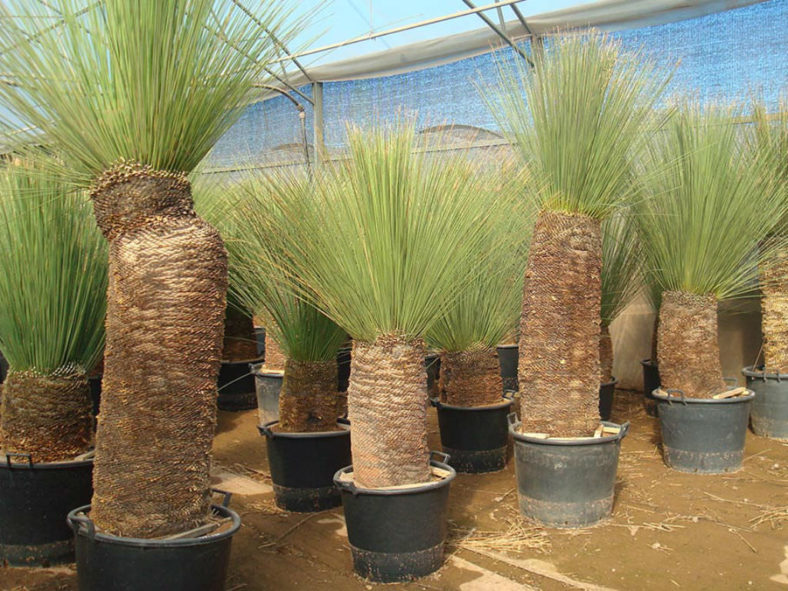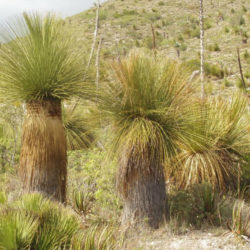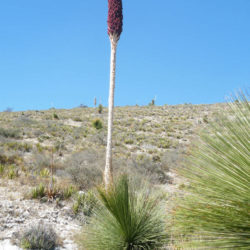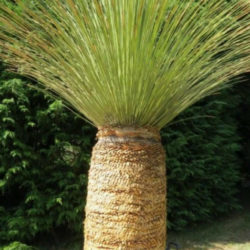Scientific Name
Dasylirion longissimum Lem.
Common Name(s)
Mexican Grass Tree
Synonym(s)
Dasylirion longissimum var. longissimum
Scientific Classification
Family: Asparagaceae
Subfamily: Nolinoideae
Genus: Dasylirion
Origin
This species is native to Mexico. It occurs in southern San Luís Potosí, Queretaro, and Hidalgo.
Description
Dasylirion longissimum is a large succulent with long, arching, grass-like leaves that radiate symmetrically out of an upright or partially reclining, woody trunk skirted with old leaves. The trunk slowly grows up to 13.1 feet (4 m) tall. Leaves are glaucous green, spoon-shaped at the base, gradually narrowing above, and have nearly toothless margins. They are up to 4.6 feet (1.4 m) long and 0.5 inches (1.2 cm) wide.
An up to 13.1 feet (4 m) tall spike with white to brownish-yellow flowers, usually from summer to fall. This plant is dioecious, having the male and female flowers in separate specimens.

Hardiness
USDA hardiness zone 8b to 10b: from 15 °F (−9.4 °C) to 40 °F (+4.4 °C).
How to Grow and Care
Dasylirions are slow-growing, carefree, durable, drought-tolerant plants. However, they grow faster if watered well (don't water the crown, though they rot easily). They should be placed in a sunny, well-drained area with additional summer water in dry climates in the garden.
These make great specimen plants for xeriscape gardens and blend well in either tropical or arid gardens. Small plants are relatively inexpensive, but larger ones are a fortune. These make excellent potted specimens, and their symmetrical form provides a striking focal point.
They thrive best in full sun but can be grown with some shade and humidity. Plant in very fast-draining soil and provide little or no water in winter. Treat like a succulent. Best where winter temperatures stay above 50°F (10°C) but can take some periods of frost. Plants in containers can be moved inside during longer cold spells.
See more at How to Grow and Care for Dasylirion.
Links
- Back to genus Dasylirion
- Succupedia: Browse succulents by Scientific Name, Common Name, Genus, Family, USDA Hardiness Zone, Origin, or cacti by Genus
Photo Gallery
Click on a photo to see a larger version.


